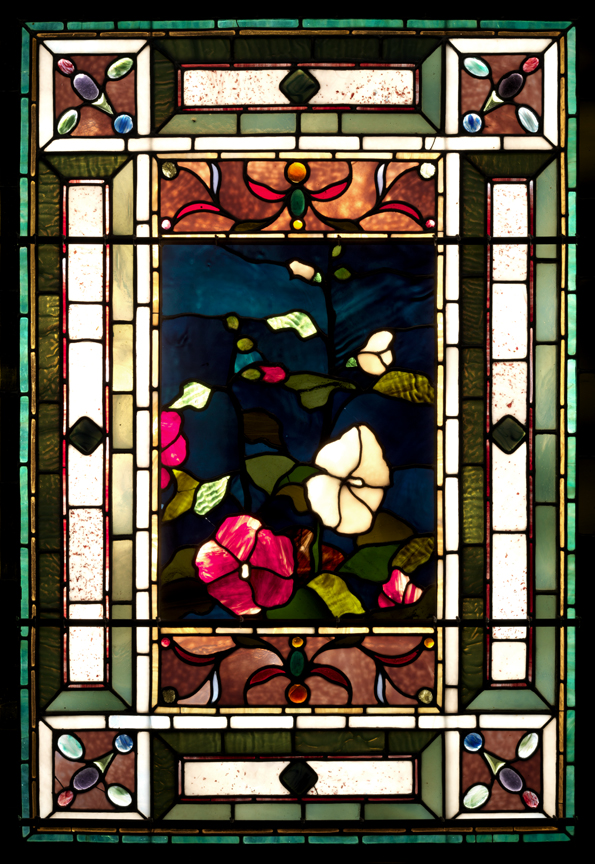
Hollyhocks and Morning Glories
John La Farge
In 1879, John La Forge developed a new technique for making colorful shimmering windows of opalescent glass. This semi-opaque glass is composed of numerous suspended particles that reflect and scatter light, creating a distinctive iridescent flow. By layering and shaping glass of different colors and thicknesses, La Farge created three-dimensional decorative effects, ideal for representing delicate forms like flowers. The artist's student and friend, Louis Comfort Tiffany, experimented further with this technique. Tiffany added metallic oxides to his glass, which produced subtle gradations of rich color. With this innovation, he was able to evocatively capture the qualities of natural elements like water, sky, and plants in glass. Professional competition between La Farge and Tiffany led to a falling out between the two friends and an acrimonious rivalry. However, their singular contribution modernized the art of stained glass and was influential to the Art Nouveau movement in Europe and America.
Artist
Date of Birth
(1835-1910)
Date
ca. 1884
Medium
Opalescent stained glass, lead came, and wood sash
Dimensions
framed: 45 x 31 1/4 x 7 in. (114.3 x 79.375 x 17.78 cm.)
Accession #
1976.7.1
Credit Line
Gift of Mr. and Mrs. Theodore T. Newbold in memory of Louis I. Kahn
Copyright
No known copyright restrictions
Category
Subject
We're so excited you're planning to visit PAFA!
Make time for art — visit us Thursday to Sunday.
Before reserving your tickets, please review helpful information about museum hours, accessibility, building access, and special admission programs.
If you have any questions, feel free to reach out to us at visitorservices@pafa.org — we’d love to help!
